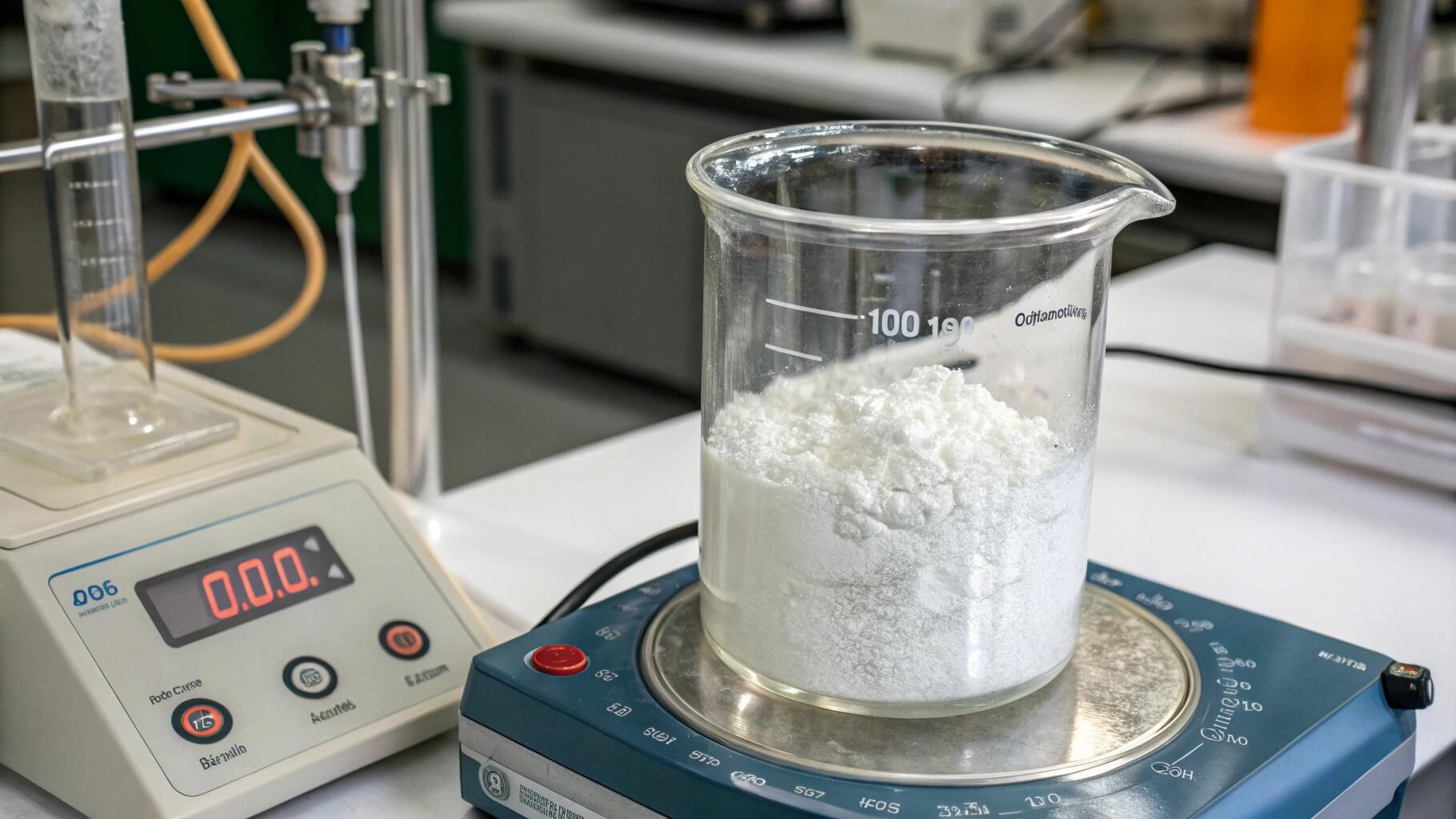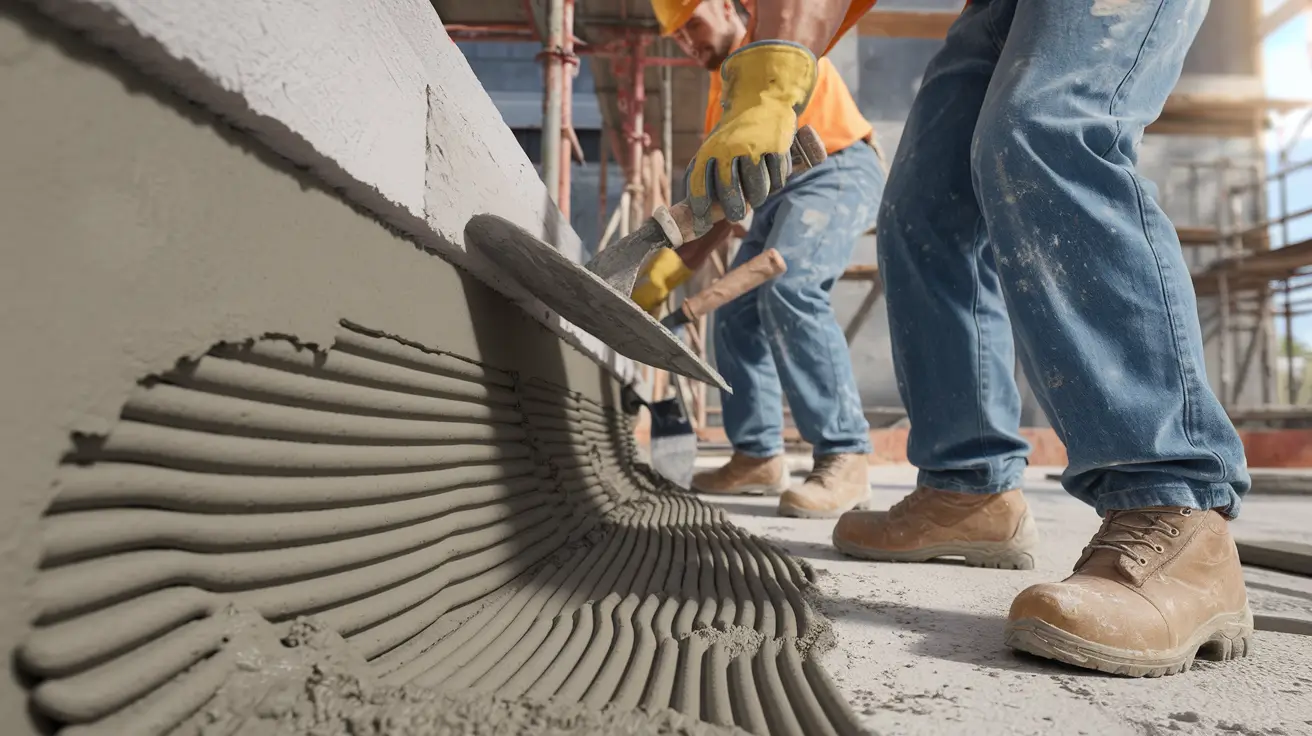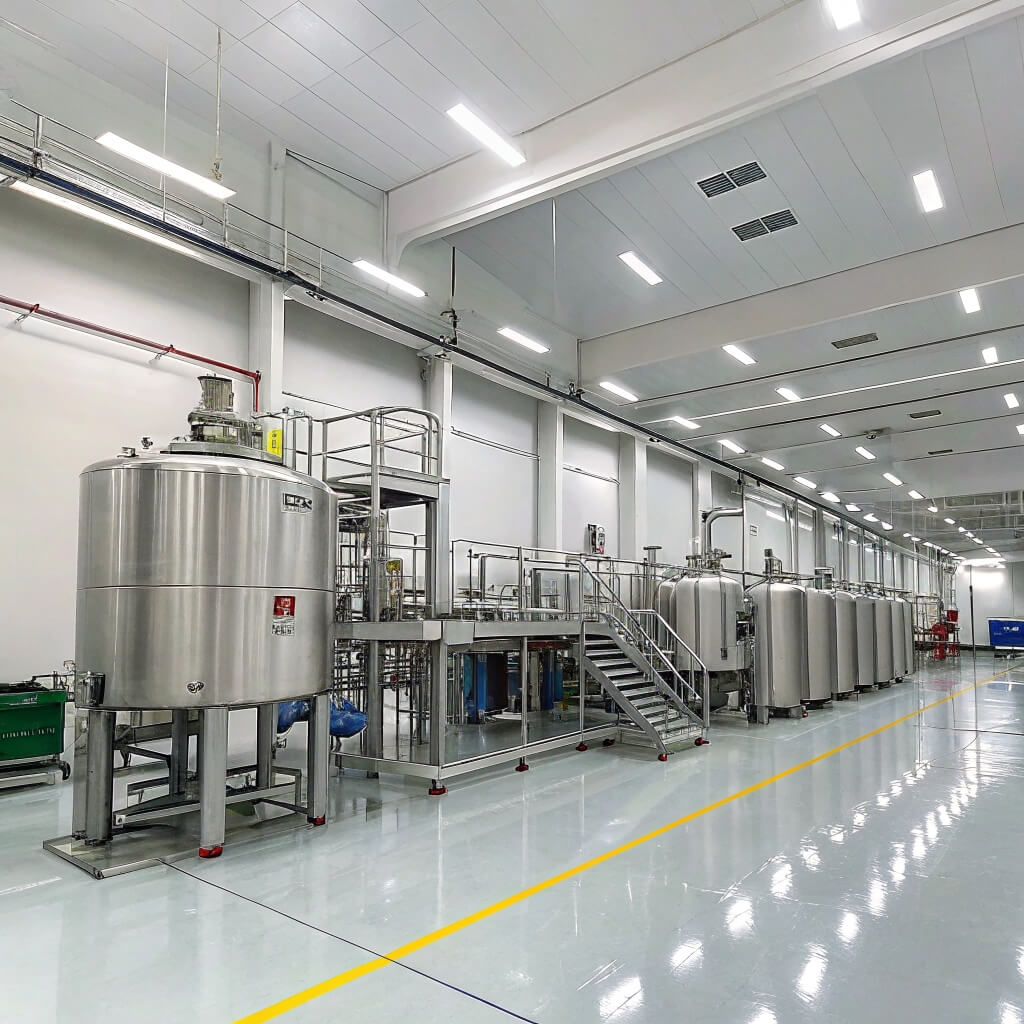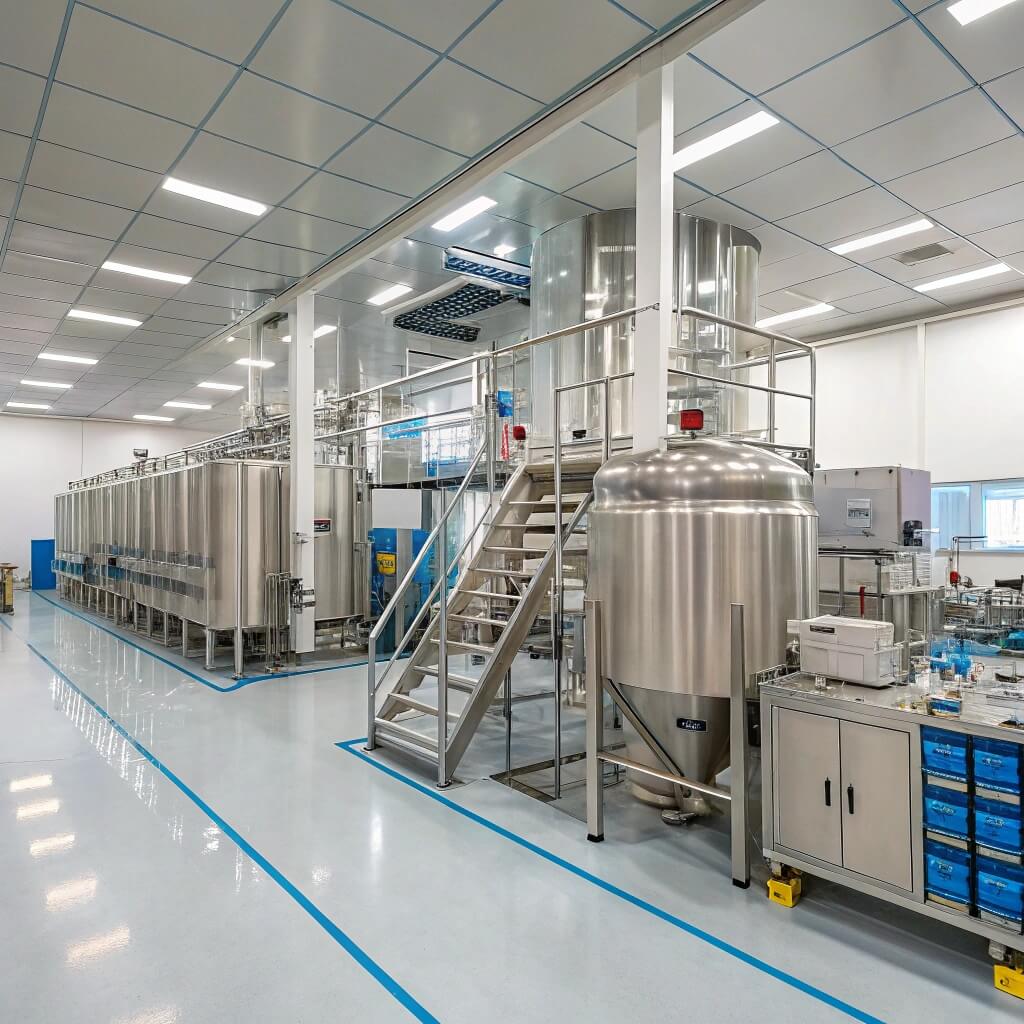HPMC E15 is widely used in pharmaceuticals, construction, and food industries. But many struggle to dissolve it correctly, leading to inconsistent performance. Improper handling causes clumping and incomplete dispersion, impacting formulation stability. So, how do you dissolve HPMC E15 properly?
HPMC E15 dissolves in water using a controlled hydration process. It disperses first in cold water, then fully dissolves as the temperature rises. Proper mixing, gradual addition, and pH adjustments improve solubility, ensuring smooth and uniform solutions without clumps.

HPMC E15 dissolves best through a controlled dispersion and hydration process. This image illustrates the step-by-step method for optimal solubilization.
Incorrect dissolution affects performance in coatings, adhesives, and pharmaceuticals. Understanding the factors that influence HPMC E15 solubility is key to optimizing formulations. Let’s explore the science behind its solubility and the best techniques to dissolve it efficiently.
Why is Understanding HPMC E15 Solubility Important?
HPMC E15 plays a crucial role in pharmaceuticals, coatings, and adhesives, yet improper dissolution leads to poor performance. If not fully dissolved, it forms clumps, reducing effectiveness in formulations. So why is understanding its solubility so essential?
HPMC E15 solubility determines its functionality in various applications. In pharmaceuticals, incomplete dissolution affects drug release. In construction, poor solubility leads to weak adhesion. Understanding solubility ensures proper formulation, preventing defects and enhancing performance.
The Role of Solubility in Different Industries
HPMC E15’s solubility behavior varies across industries. Here’s how it impacts different applications:
| Industry | Function of HPMC E15 | Impact of Poor Solubility |
|---|---|---|
| Pharmaceuticals | Controls drug release, film coating | Uneven dissolution affects bioavailability |
| Construction | Enhances mortar adhesion, water retention | Clumping weakens bonding strength |
| Food Industry | Acts as a thickener, stabilizer | Incomplete dispersion alters texture and consistency |
Without proper dissolution, formulations become unstable, affecting quality, consistency, and overall product performance.
Why Solubility Directly Affects HPMC E15 Performance
- Even Distribution: Ensures uniform thickening and gelling properties.
- Enhanced Stability: Prevents precipitation in formulations.
- Optimized Viscosity: Achieves the desired texture in coatings and adhesives.
- Better Absorption: In pharmaceuticals, correct dissolution ensures proper drug delivery.
Common Challenges in HPMC E15 Dissolution
- Clumping: Occurs when HPMC is added too quickly or in hot water.
- Slow Hydration: Some formulations require pre-dispersing techniques.
- Incomplete Solubility: pH and temperature affect dissolution efficiency.
To achieve optimal performance, understanding what factors influence HPMC E15 solubility is critical. Let’s examine these key factors in the next section.
What Are the Key Factors Affecting HPMC E15 Solubility?
Many users struggle with dissolving HPMC E15 properly, leading to clumping or incomplete dispersion. Several factors influence its solubility, making it essential to understand the conditions that optimize dissolution.
HPMC E15 solubility depends on temperature, pH, concentration, and mixing speed. Cold water dispersion followed by gradual heating improves solubility. Adjusting pH and ensuring proper mixing techniques prevent clumps and enhance dissolution efficiency.
1. Temperature and Its Impact on Solubility
HPMC E15 behaves differently at various temperatures:
| Temperature Range | Solubility Behavior |
|---|---|
| 0–10°C (Cold Water) | Disperses without dissolving, forming a temporary suspension. |
| 10–40°C (Hydration Phase) | Begins swelling and slowly dissolving. |
| 40–70°C (Optimal Dissolution Range) | Fully dissolves, achieving maximum viscosity. |
| Above 80°C | Forms a gel, leading to incomplete solubility. |
For best results, first disperse HPMC E15 in cold water before increasing the temperature gradually.
2. pH Levels and Chemical Stability
HPMC E15 dissolves effectively in a neutral to slightly alkaline pH. Extreme pH conditions can degrade its molecular structure, reducing its efficiency in formulations.
- Ideal pH range: 6.5–8.5
- pH below 4.0: May cause precipitation or reduced viscosity.
- pH above 9.0: Leads to degradation, impacting stability.
3. Mixing Techniques and Shear Force
Using the correct mixing method significantly improves HPMC E15 dissolution.
- Low-speed stirring: Prevents clumps but may require longer hydration time.
- High-speed dispersion: Breaks up particles faster but risks excessive aeration.
- Stepwise addition: Slowly adding HPMC while stirring reduces agglomeration.
4. Concentration and Solution Viscosity
Higher concentrations require longer dissolution times due to increased viscosity.
| HPMC E15 Concentration | Dissolution Time |
|---|---|
| 0.5–1.0% | Dissolves quickly with proper stirring. |
| 1.0–2.5% | Requires gradual mixing and sufficient hydration time. |
| Above 2.5% | Significantly increases viscosity, making dissolution difficult. |
To avoid issues, always dissolve smaller concentrations first, then gradually increase the amount.
5. Water Quality and Ionic Strength
Water impurities, salts, and minerals can affect HPMC E15 solubility. Hard water may interfere with hydration, leading to inconsistent results. Using deionized or distilled water ensures optimal dissolution.
Understanding these key factors ensures proper HPMC E15 solubility. In the next section, we’ll explore step-by-step methods to dissolve HPMC E15 in water efficiently.
How to Properly Dissolve HPMC E15 in Water?
Many struggle with dissolving HPMC E15 efficiently. If added incorrectly, it forms clumps, leading to uneven viscosity[^1] and poor formulation performance. So, what’s the correct way to dissolve it?
[^1]: Learn how to prevent uneven viscosity to enhance the quality and effectiveness of your formulations.
The best method involves cold water dispersion, gradual hydration, and controlled heating. First, disperse HPMC E15 in cold water with stirring. As the temperature rises, it fully dissolves, forming a uniform solution.
Step-by-Step Guide to Dissolving HPMC E15 in Water
To achieve a smooth, fully dissolved solution, follow these steps:
-
Measure the Correct Amount
- Weigh the required HPMC E15 accurately based on formulation needs.
- Using excess powder can lead to longer hydration times.
-
Disperse in Cold Water (0–10°C)
- Pour cold water into a mixing vessel.
- Slowly sprinkle HPMC E15 over the surface while stirring gently.
- Avoid dumping all at once to prevent agglomeration.
-
Stir and Allow Hydration (10–40°C)
- Continue stirring at low speed to keep the particles suspended.
- Let the mixture sit for 20–60 minutes to allow proper hydration.
-
Gradually Increase Temperature (40–70°C)
- Slowly heat the solution while stirring.
- HPMC E15 fully dissolves between 40–70°C, reaching optimal viscosity.
-
Final Mixing and Viscosity Adjustment
- Continue gentle stirring until the solution becomes clear and uniform.
- Adjust viscosity by adding more water if needed.
Best Practices for a Smooth HPMC E15 Solution
| Best Practice | Why It Works |
|---|---|
| Use cold water first | Prevents clumping, ensuring even dispersion. |
| Slowly sprinkle powder | Reduces agglomeration for smoother hydration. |
| Continuous stirring | Helps achieve uniform dissolution. |
| Allow full hydration | Ensures optimal viscosity development. |
| Avoid excessive heat | Prevents premature gelation and instability. |
Common Mistakes to Avoid
- Adding HPMC directly to hot water – Causes instant gelation, preventing full dissolution.
- Dumping powder all at once – Leads to clumping and incomplete hydration.
- Not stirring continuously – Results in uneven viscosity and poor dispersion.
How Long Does It Take to Dissolve HPMC E15?
Dissolution time varies based on concentration and temperature:
| HPMC E15 Concentration | Approximate Dissolution Time |
|---|---|
| 0.5–1.0% | 15–30 minutes |
| 1.0–2.5% | 30–60 minutes |
| Above 2.5% | Requires extended mixing and gradual heating |
Following this method ensures a smooth, stable, and fully dissolved HPMC E15 solution. But what about organic solvents? In the next section, we’ll explore whether HPMC E15 can dissolve in non-aqueous solvents.
Can HPMC E15 Dissolve in Organic Solvents?
Many assume HPMC E15 dissolves in all liquids, but this isn’t true. Unlike water-soluble polymers, its interaction with organic solvents varies. Understanding how it behaves in different media prevents formulation issues.
HPMC E15 does not dissolve in pure organic solvents like ethanol, acetone, or chloroform. However, it can disperse or swell in certain solvent-water mixtures. The degree of solubility depends on the solvent type, polarity, and ratio.
Solubility of HPMC E15 in Different Organic Solvents
| Solvent Type | Solubility Behavior |
|---|---|
| Pure Ethanol | Swells but does not dissolve. |
| Acetone | Precipitates, leading to phase separation. |
| Methanol | Limited solubility, requires water co-solvent. |
| Isopropanol (IPA) | Forms a gel at certain concentrations. |
| Ethanol-Water (50:50) | Partial solubility, used in coatings. |
How Organic Solvent Mixtures Affect HPMC E15 Dissolution
- Hydro-Alcoholic Systems: HPMC E15 dissolves partially in ethanol-water mixtures, commonly used in pharmaceutical coatings and sustained-release tablets.
- Acetone-Water Mixtures: Used in solvent-based formulations, but requires controlled ratios.
- Glycols and Polyols: Some formulations use propylene glycol or glycerol to improve dispersion.
Best Practices for Using HPMC E15 in Organic Solvent Systems
- Use Water as a Primary Solvent
- Pre-hydrate HPMC E15 in water before mixing with organic solvents.
- Optimize Solvent Ratios
- Maintain a balance between organic and aqueous phases to prevent precipitation.
- Test Compatibility
- Always test HPMC solubility with different organic solvents before scaling up production.
Key Considerations When Working with Organic Solvents
- HPMC E15 is hydrophilic, meaning it requires some water for proper dissolution.
- Excessive organic solvent concentration can cause phase separation or precipitation.
- Certain pharmaceutical applications require careful selection of solvent systems to achieve controlled drug release.
While HPMC E15 does not fully dissolve in organic solvents alone, careful formulation with water-co-solvent systems enhances solubility. Next, let’s explore the best techniques to improve its dissolution rate for better efficiency.
What Are the Best Practices to Improve HPMC E15 Dissolution Rate?
Dissolving HPMC E15 can be slow, especially when handling high-viscosity solutions. Without proper techniques, clumps form, and the polymer takes longer to hydrate. So, how can we improve the dissolution rate?
The most effective methods include gradual dispersion, controlled stirring, pre-hydration, and temperature adjustments. Using optimized mixing speeds and avoiding premature gelation speeds up the dissolution process.
1. Use Cold Water for Initial Dispersion
- Why it works: HPMC E15 does not dissolve immediately in cold water, preventing clumping.
- Best method: Slowly sprinkle HPMC into cold water while stirring continuously.
| Water Temperature | Effect on Dissolution |
|---|---|
| 0–10°C | Prevents clumping, allowing proper dispersion. |
| 10–40°C | Begins hydration but remains suspended. |
| 40–70°C | Optimal range for full dissolution. |
| Above 80°C | Causes premature gelation and loss of function. |
2. Maintain Consistent Stirring Speed
- Low-speed stirring (100–300 rpm): Prevents aeration and ensures even dispersion.
- High-shear mixing (800–1500 rpm): Speeds up dissolution for high-viscosity solutions.
- Intermittent stirring: Allows time for hydration, preventing foam formation.
3. Pre-Hydration with a Water-Soluble Carrier
- Technique: Disperse HPMC E15 in a small amount of glycerin, ethanol-water mix, or polyethylene glycol (PEG) before adding to water.
- Why it works: These carriers reduce surface tension, ensuring faster hydration.
4. Adjust pH to Optimize Solubility
- Ideal pH range: 6.5–8.5
- Acidic solutions (pH < 4.0): Slow down hydration, causing precipitation.
- Alkaline conditions (pH > 9.0): May degrade polymer structure, reducing performance.
5. Use a Two-Step Hydration Process
- Disperse HPMC E15 in cold water while stirring.
- Allow standing time (30–60 minutes) for hydration.
- Gradually increase temperature (40–70°C) for full dissolution.
6. Choose the Right Concentration
Higher concentrations lead to longer dissolution times. Managing the ratio ensures better processing:
| HPMC E15 Concentration | Recommended Dissolution Strategy |
|---|---|
| 0.5–1.0% | Dissolves quickly with moderate stirring. |
| 1.0–2.5% | Requires longer hydration and gentle heating. |
| Above 2.5% | Needs high-shear mixing and extended hydration. |
7. Prevent Air Entrapment
- Avoid excessive agitation to reduce foaming.
- Use defoamers in industrial applications.
- Mix under vacuum for high-purity pharmaceutical formulations.
Final Thoughts
Optimizing HPMC E15 dissolution requires careful control of temperature, stirring, pH, and concentration. By following these best practices, you can achieve faster, smoother, and more efficient solubility. In the next section, we’ll summarize key takeaways for ensuring effective HPMC E15 solubilization.
Conclusion: How to Ensure Efficient HPMC E15 Solubilization?
Dissolving HPMC E15 effectively is essential for achieving consistent viscosity, stability, and functionality in formulations. When handled incorrectly, it leads to clumping, uneven dispersion, and reduced performance. So, how can we ensure a smooth and efficient solubilization process?
The key lies in controlled dispersion, gradual hydration, proper temperature adjustments, and optimized mixing techniques. By following best practices such as cold water dispersion, stepwise heating, and pH regulation, HPMC E15 can dissolve uniformly without compromising its functional properties.
Key Takeaways for Effective HPMC E15 Dissolution
- Disperse in Cold Water First – Prevents clumping and ensures even hydration.
- Use Proper Mixing Speeds – Low-speed stirring minimizes air entrapment, while high-shear mixing accelerates dissolution.
- Control Temperature Gradually – Heating between 40–70°C allows full solubilization without premature gelation.
- Monitor pH Levels – Keeping the pH between 6.5 and 8.5 preserves stability and prevents polymer degradation.
- Optimize Concentration – Lower concentrations dissolve faster, while higher concentrations require extended hydration.
Final Thoughts
A systematic approach to HPMC E15 solubilization ensures optimal performance across pharmaceuticals, construction, food, and coatings industries. Whether working with water-based or organic-solvent systems, following these principles minimizes processing challenges and enhances formulation stability.
For businesses handling HPMC E15 in bulk applications, ensuring proper dissolution methods improves efficiency, reduces waste, and guarantees consistent product quality. Need expert recommendations for your specific application? Contact our team today to optimize your HPMC E15 formulations.
FAQ
How do you solubilize HPMC?
HPMC dissolves best when dispersed in cold water first, followed by controlled heating. The ideal method involves gradual hydration, stirring, and temperature regulation. Sprinkle HPMC into cold water while stirring to prevent clumping. After hydration, raising the temperature to 40–70°C ensures full dissolution and optimal viscosity. Adjusting pH and using a pre-dispersion method with ethanol-water or glycerin can further enhance solubility.
How to dissolve HPMC in cold water?
HPMC does not dissolve immediately in cold water but disperses as fine particles. The best technique is to slowly add HPMC powder into cold water (0–10°C) while stirring. This prevents agglomeration and allows proper hydration. After mixing, let the solution sit for 30–60 minutes, allowing the polymer to swell. Once hydrated, gradual heating up to 40–70°C completes the dissolution process.
Is HPMC E15 soluble in water?
Yes, HPMC E15 is water-soluble but requires a stepwise dissolution process. It disperses in cold water and fully dissolves when the temperature increases. The hydration time, pH level, and mixing speed affect the dissolution efficiency. Ensuring proper stirring and controlled temperature adjustments allows for smooth and lump-free solubility.
What dissolves HPMC?
HPMC dissolves in water and certain hydro-alcoholic mixtures. It does not dissolve in pure organic solvents like acetone, ethanol, or chloroform but can swell in solvent-water systems. Best solvents for HPMC include:
- Water (0–70°C) – Ideal for full dissolution.
- Ethanol-Water Mixtures – Used in pharmaceutical coatings.
- Glycerin or Propylene Glycol – Pre-dispersion aids hydration.
Proper solvent selection ensures stable formulations and effective HPMC solubilization in different applications.




